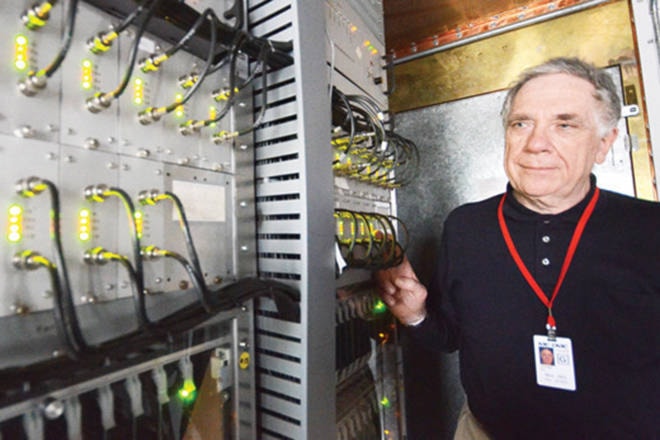On Sept. 14, 2015, the Laser Interferometer Gravitational-Wave Observatory (LIGO) made the first ever detection of gravity waves.
These were generated by the merger of two distant black holes. The signal showed clearly how they spiraled into one another and merged. However, one isolated event rarely tells us that much. Multiple events could lead to a completely new way to see the universe. We got an answer on Dec. 20, 2015, when LIGO detected another black hole merger and then, on Jan. 4, 2017, yet another one. We had a new science!
If you disturb any deformable medium, you make waves. These spread out, carrying information on what caused them. Put your finger in a pond and you make ripples. Encoded in those ripples is information about what caused them. An appropriate “ripple” detector somewhere else in the pond could extract that information. For example, there is an insect known as a “pond skater.” It sits on the surface of the water without breaking the surface film, sensing all the passing ripples. If they come from a leaf falling into the water, or the impact of a raindrop, it will ignore them. However, if it senses ripples from an insect that has fallen in, it decodes the ripples using the signals picked up by its six legs, and rapidly moves off in the direction of dinner.
Newton thought of space and time as a rigid, immutable framework within which everything happens. Einstein and others showed that space-time is not rigid and immutable. It can be stretched and distorted; it is a deformable medium. Any event distorting space-time will make waves that radiate off in all directions. As they move, planets, stars and galaxies make bow waves and leave wakes in space-time. Just as throwing a stone into a pond makes ripples that radiate away from the splash, any event like a supernova explosion or collisions between neutron stars or black holes make space-time ripples. These are known as “gravity waves.” These are actual compressions and expansions in space-time.
In principle, a ruler pointing in the direction of the arrival of a gravity wave will change length. However, the effect is so tiny that it would be very hard to detect. The LIGO consists essentially of two rulers, each four kilometres long, at right angles to one another. The idea is to detect how one might change in length compared with the other, depending on the direction of arrival of the gravity waves. In this case the rulers are long vacuum tubes with lasers shining along them. The laser beams reflect off mirrors at the far ends of the tubes. The reflected beams from both tubes are then brought together and compared. This provides an extremely sensitive detector of changes in the length of one light path compared with the other. Even with this big an instrument, the Jan. 4 event changed the length of one of the tubes and the light beam in it by an amount 1,000 times smaller than the diameter of a proton. That event was produced by the merger of two black holes, with masses of 19 and 32 times that of the sun. They combined to form a bigger black hole with a mass of 49 solar masses. The remaining two solar masses of material were annihilated, converted into pulses of gravity waves.
Even this remarkable instrument can only pick up waves produced by high energy events. However, gravity wave astronomy is a newborn science, rather like radio astronomy in the late 1940’s. Since then the improvements in sensitivity and imaging capability in radio telescopes have been dramatic. It’s likely that gravity wave astronomy will make the same sort of progress. Watch this space!
The sun reached the northernmost point in its yearly travels — the summer solstice — at 00:24 EDT, 21:24 PDT on June 20. Venus lies low in the dawn glow; Jupiter lies in the southwest after sunset and Saturn low in the southeast. The moon will be new on June 23.
Ken Tapping is an astronomer with the NRC’s Dominion Radio Astrophysical Observatory.



